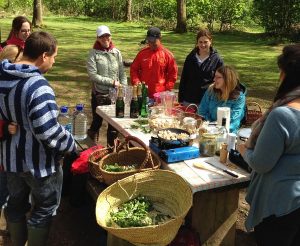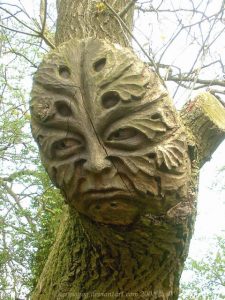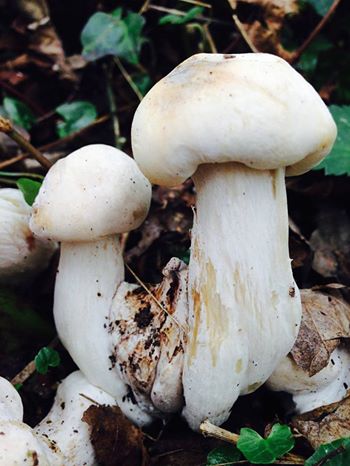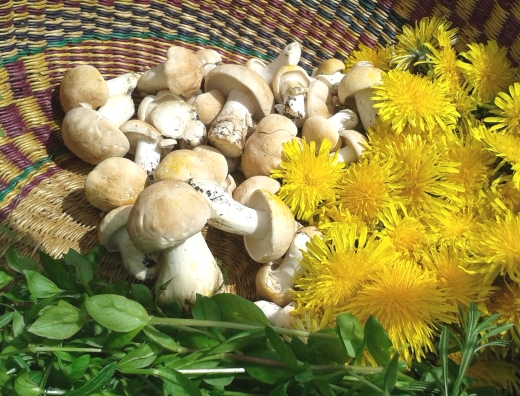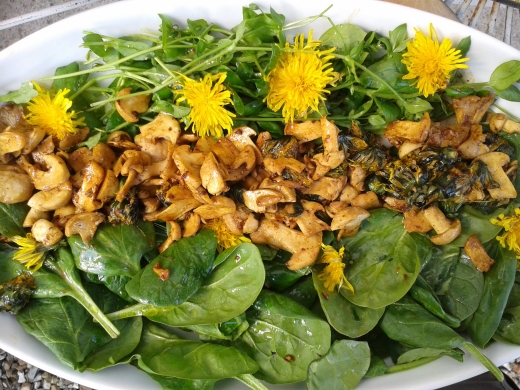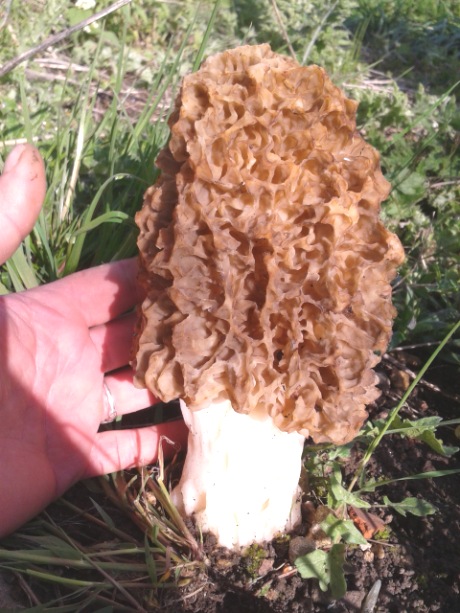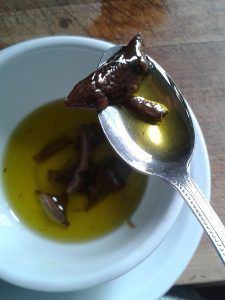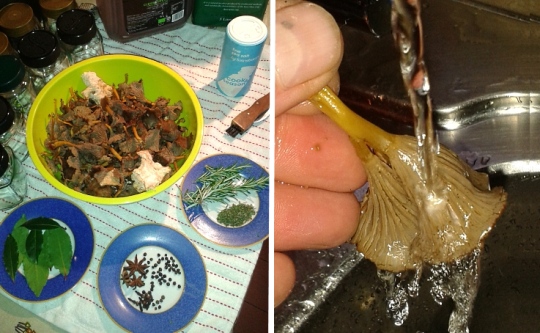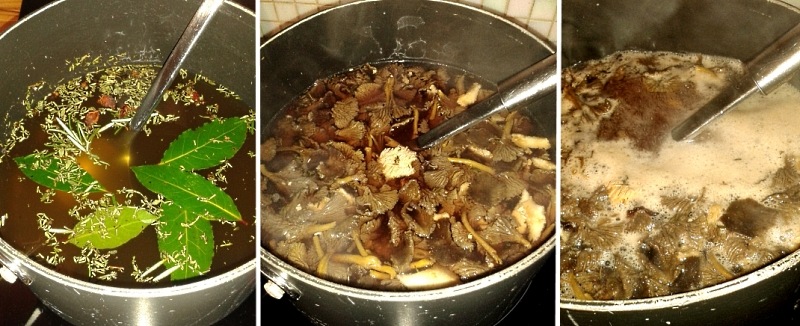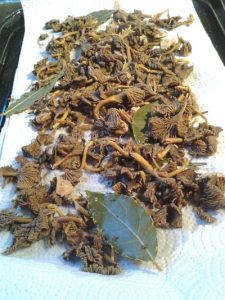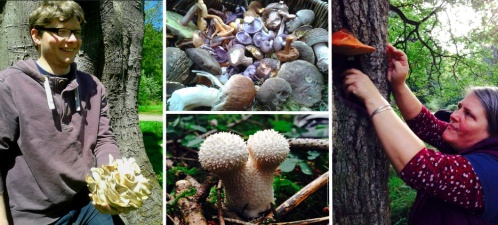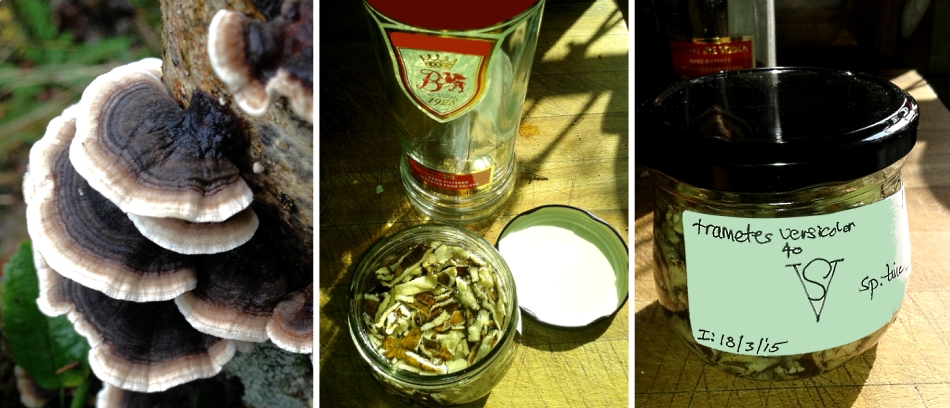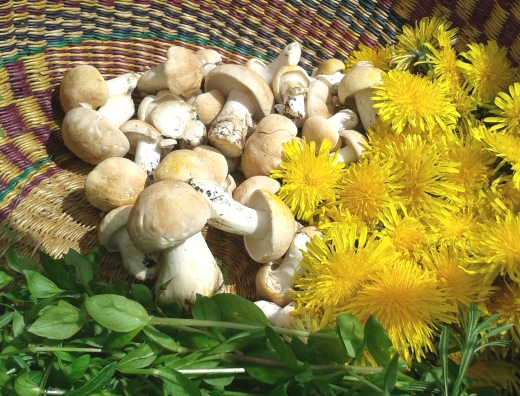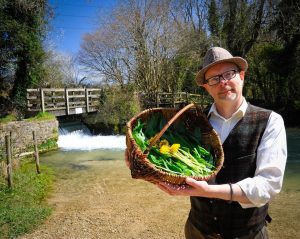Hello Wildsiders!
Spring is here and as the soil begins to warm up, things are also warming up in the foraging world. I’m going to tell you about all the exciting things we are up to this year in a moment, and I am also going to share a recipe with you… a simple recipe so good that having just drained my second bowl I am left wanting more!
Wild garlic, young stinging nettles and the herb known as cleavers are to be found in many many places around the UK at this time of the year, and I am going to tell you in a minute how to make a truly rewarding thick soup using just these three common plants. It is so ‘moreish’ that you will want to go out picking the ingredients every single day!
I’m just pausing for a little more of that soup… One day they will invent a ‘click to taste’ button but right now there is only one way to taste this and that is to go and make it for yourself. Once you have checked out the offerings in this newsletter, scroll down and check out this beautiful recipe… and thanks go to the talented Natascha Kenyon for having created all three bowls full 🙂
First, here are my spring offerings to you from The Wild Side of Life. Click the links to find out more:
SPRING FORAGING
St. George’s Mushroom Champagne Picnic (only a few places left)
We will forage for this beautiful spring mushroom that sometimes grows in HUGE rings, cook it together with other wild foraged ingredients, then enjoy with a glass or two of champagne! Delicious! Happening on the 26th April so book now!
Secret Sunday Spring Forager’s Club (only a few places left)
An in-depth foraging experience where you will receive 18.5 hours of expert tuition in different habitats over the spring season. Bring a guest along for a feast, and send pictures of the foraging finds you make outside of the course to our private mailing list for identification. Starting in 2 weeks – book now!
Pignuts, Fiddles and Burdock
A special day focusing on finding and cooking these 3 ingredients in imaginative ways… it’s all about the taste and there will be plenty of it as we combine these exciting foods in a multitude of ways! We will also be walking through some stunning scenery on this day and will stop to eat out packed lunches in one of Wiltshire’s remotest spots near an ancient burial chamber of the Marlborough Downs.
Private mentoring in sap tapping and spring wild food cookery is also available, contact me to arrange: Fred@thewildsideoflife.co.uk
HERBALISM WORKSHOPS
Herbal First Aid Weekend
On this weekend you will learn to identify many useful medicinal plants from the English hedgerows and use them to make between 15 and 20 remedies to treat common ailments that most of us encounter at some time or another. You will take home tinctures, elixirs, teas, electuaries, infused oils, capsules and salves for your own home pharmacy, along with the skills and knowledge to make them again and again.
Winter Remedies Weekend
Many of us tend to suffer a bit in the winter in our temperate climate. Coughs, colds, influenza, chilblains, aches and pains brought on by damp. Lots of conditions are exacerbated by the damp cold of winter and on this weekend you will learn to identify many useful medicinal plants from the English hedgerows and use them to make between 15 and 20 remedies to treat common winter ailments. You will take home cough remedies, immune enhancing mushrooms, anti-inflammatory teas, elixirs, capsules and salves for your own home pharmacy.
UK First Medicinal Mushrooms Conference
A conference held at a 5-star venue in rural Lincolnshire with practical woodland foraging & remedy making, guest speakers include Roger Philips (author of “Mushrooms”), Matthew Rooney (Biodynamic Mushroom Cultivator at ‘Mushroom Table’), Martin Powell (author of “Medicinal Mushrooms – A Clinical Guide”), Cristina Cromer (Medical Herbalist and former Lecturer at the University of Westminster) and Fred Gillam (author of “Poisonous Plants in Great Britain”) and Natascha Kenyon from The Wild Side of Life. Please send an email if you are interested to… Fred@thewildsideoflife.co.uk
BUSHCRAFT & WOODLAND BASED CRAFT COURSES
Family Bushcraft Camping Weekend
A weekend for all the family to learn the basics of camp-craft, putting up a ‘basha’ shelter, purifying your own river water, learning techniques for lighting the cooking fire without matches, making cord from tree bark, and much more. An idyllic woodland clearing with a clean flowing river awaits your adventure.
Ancient Pewter Smithing
Using the ancient ‘cuttlebone’ technique known to the ancient Greeks and Egyptians, you will be guided through all the processes needed to cast your own item of unique and attractive jewellery in English Pewter. Some say the look of the molten metal in the fire is like a magical window on creation itself – it is certainly a memorable and inspiring experience. We will do this in a small group over a native hardwood charcoal fire. You will take home a beautiful and unique item to cherish forever.
Coracle Making Weekend
Coracles (skin covered, wooden framed, tensioned boats) of differing designs were once widespread on rivers in many parts of the world and originally covered in animal hide. Since the industrial revolution in Britain they have been covered in calico cloth and waterproofed with tar. Still used for salmon fishing, these versatile and fun craft carry a surprising load and can take you to places inaccessible on foot. Make your own and take it home!
Woodcrafts of the European Nomads (flowers, pegs, baskets and more) – details coming very soon, please drop me an email if you are interested… we will be creating hand crafted items in the woods using the centuries old methods of the gypsies and travellers… baskets, clothes pegs, wooden flowers… and sharing Romany stories and cookery around a roaring camp fire! Fred@thewildsideoflife.co.uk
AUTUMN MUSHROOM COURSES
As featured in BBC Countryfile Magazine’s Top 10 UK Foraging Courses
The Secret Sunday Mushroom Club
Acclaimed foraging experience where you will receive 18.5 hours of expert tuition in different habitats focusing on how to locate and identify with confidence most of the best UK edible species. Fred the Forager regularly uses more than 100 species and there will be plenty of advice on how to build you own repertoire safely. Bring a guest along for a feast on the last day and have the finds you make outside of the course identified by sending your pictures to our private mailing list. Places go fast so book early.
Gourmet Mushroom Discovery Days in Wiltshire, The Gower and the New Forest
If you are looking for an exciting and special one day mushroom experience these days are for you. You will be introduced over the course of the day to some of the finer gourmet mushrooms and shown how to spot the poisonous lookalikes. We will cook our finds in the forest at the end of the day. These courses take place in some of the best locations in the region for fungi, and time will be spent discussing how to pick mushrooms sustainably without detriment to future populations. Take home some wonderful memories and feel free to come back for advice when identifying you future finds.
Gift Vouchers
Did you know that you can buy vouchers for mother’s day, birthdays, Christmas day, practically any day you like from my website? If the course voucher you need is not already available on the shop page, all you have to do is email Fred@thewildsideoflife.co.uk and I will prepare one especially for you with your recipients name on it!
Here is what people have had to say about receiving our vouchers as gifts…
“My Gourmet Mushroom Discovery Day has simply been a wonderful birthday present. When I first received the voucher I wondered what it would be like but I have had an amazing time and have learned so much! I will never look at the woods in the same way again and I even feel confident enough now to go and pick some of the mushrooms for myself!”
“My son bought me a voucher for Mother’s Day for a day’s foraging tuition with The Wild Side of Life. I have had a lot of fun and I never realised just how much tasty food is out there for the picking. I enjoyed my present very much and I would definitely like to go out again, perhaps on one of the courses next time.”
There is a new loyalty referral scheme that you can join too, meaning that you can get your courses for less if you share the joy with someone else – which is a win-win situation. I am going to email everybody about this very soon so if you are one of our subscribers keep an eye out for it in your mailbox.
MEET US AT EVENTS & FESTIVALS IN 2015
We will be attending a number of food and festival events this year so pop in to our stand for a chat and a foraged fruit leather… we love to meet you all! We will be at the Great WIld Food & Chilli Fair at Molden in Essex on June 27th & 28th. The website for this fabulous event is here. As Fred the Forager I will be running workshops in ‘de-mystifying mushroom identification’, ‘tree foods’ and ‘herbal first aid’ as well as giving a talk on Poisonous Plants. You can find out about all of them here, where you can also pre-book your workshop places at this event.
On May 16th watch out for my talk “The Mushroom Forager’s Tales” in The Real Food & Drink Theatre at the Marlborough Food & Drink Festival in Wiltshire. There will be lots of other talks by well known foodies too, so check their web page to find the schedule.
The Wild Side of Life will be providing foraging workshops and medicinal mushroom talks at both the Green Gathering and Heart of the East festivals / gatherings this year, as part of the AVALON RISING programme.
…and now for the recipe, mmmm enjoy 😉 and don’t forget to check out our presence on Facebook and Twitter
Click here for the Wild Garlic, Stinging Nettle and Cleavers Soup Recipe
Best wishes and happy foraging!
Fred the Forager
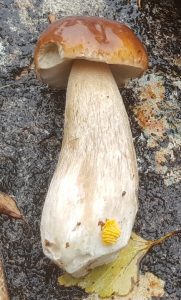
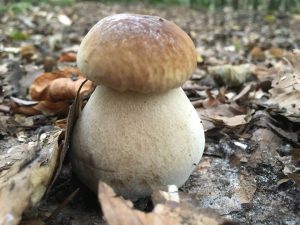 CAP: Yellowish brown to reddish brown… but predominantly brown, looking just like a bread bun on a short, swollen fat stick – hence the name ‘penny bun’. Often there is a paler margin around the edge.
CAP: Yellowish brown to reddish brown… but predominantly brown, looking just like a bread bun on a short, swollen fat stick – hence the name ‘penny bun’. Often there is a paler margin around the edge. 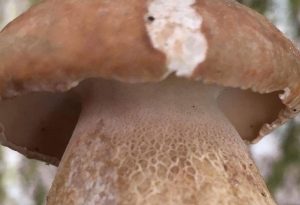 STEM: The stem of the cep can be very very fat indeed, often with more usable flesh in it than the cap itself! The upper stem surface is covered in a very fine, pale/white, raised fishing-net pattern or ‘reticulum’. This white fishing reticulum is a distinctive feature.
STEM: The stem of the cep can be very very fat indeed, often with more usable flesh in it than the cap itself! The upper stem surface is covered in a very fine, pale/white, raised fishing-net pattern or ‘reticulum’. This white fishing reticulum is a distinctive feature.
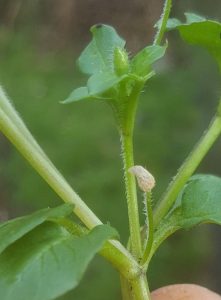
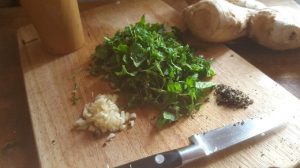
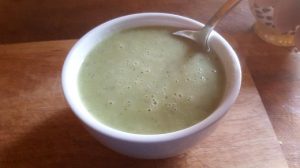
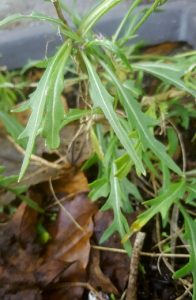
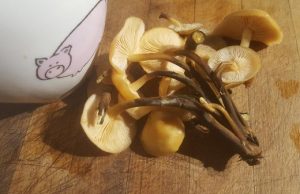
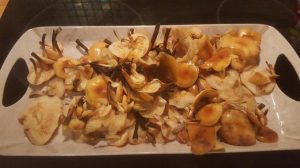
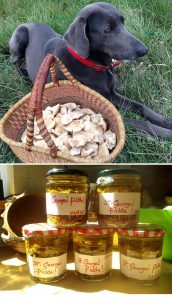
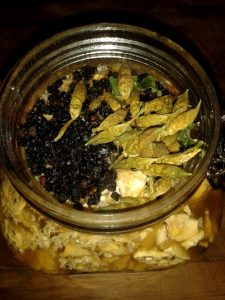 Place the mushrooms, elderberries, ginger, wild garlic buds and black pepper in a large Kilner jar or other similar storage jar. Mix together the warm water, cider vinegar and sea salt until the sea salt is completely dissolved. Pour this liquid brine over the solid ingredients in the storage jar, stir with a wooden spoon and allow the whole to marinade in a warm place for 2 hours.
Place the mushrooms, elderberries, ginger, wild garlic buds and black pepper in a large Kilner jar or other similar storage jar. Mix together the warm water, cider vinegar and sea salt until the sea salt is completely dissolved. Pour this liquid brine over the solid ingredients in the storage jar, stir with a wooden spoon and allow the whole to marinade in a warm place for 2 hours.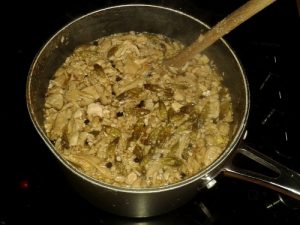
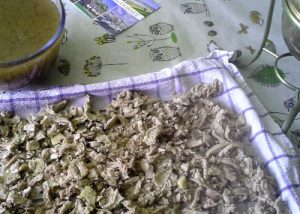
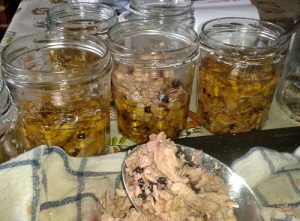
 Always remember to label your produce carefully. Everyone must have found an unlabelled jar at the back of the cupboard at some point – with unknown contents that are probably well past their best. Always put the date of manufacture on the label.
Always remember to label your produce carefully. Everyone must have found an unlabelled jar at the back of the cupboard at some point – with unknown contents that are probably well past their best. Always put the date of manufacture on the label.